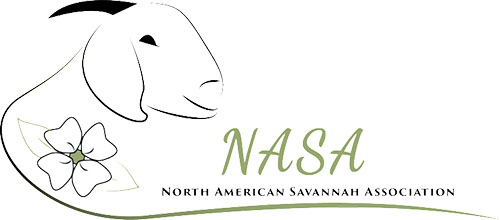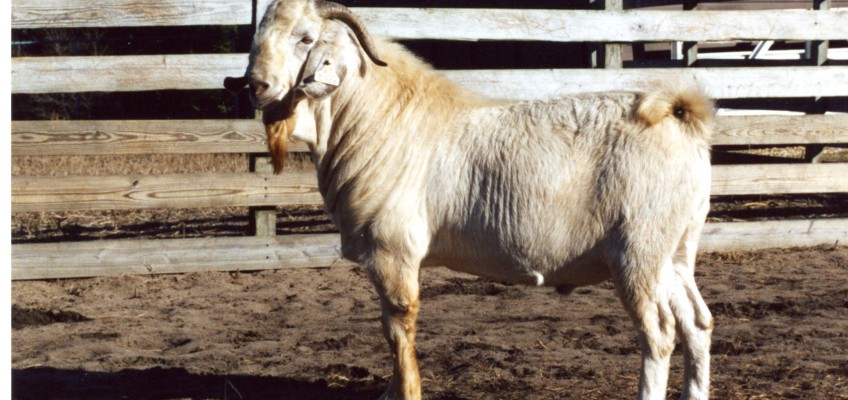Dear Savannah associates,
You might have noticed or have heard that the NASA website is no longer functioning. This is a regrettable situation that could have been avoided. The purpose of this communication is twofold: update you on the sequence of events that lead to this and invite your comments on the future of the NASA registry (Associated Registry, [email protected], 785-456-8500) Your comments should be directed to me as the proprietor of the NASA registry. My email address and phone number are provided above.
I sincerely hope your feed back will allow me to retire gracefully or at the minimum help me create a future design for the registry and an allied Association which will be positive for all Savannah enthusiasts.
I would like to start with my last communication to you for I believe it provides the vision that our fragmented community needs. It also hints at the challenges NASA faces in creating a “performance breed” in a fledgling agricultural industry where profitability is still elusive;
“Our job is to find the disconnected and connect them, to find people eager to pursue a goal and give them the structure to go achieve that goal. But just about always, we start with an already existing worldview, a point of view, a hunger that’s waiting to be satisfied.”
(Seth Godin, November 20, 2014)
“In my mind, ‘the hunger that needs satisfying’ in the meat goat industry, is performance tested genetics….I am confident that a new breed of meat goat entrepreneur is wanting something more than show records to convince them of an animal’s ‘genetic merit’…. If you are looking for a “structure” to advance the industry, I would say that Reno identified three important pillars to that structure. 1) Basic herd recording to improve management decision making. 2) On farm performance testing to identify the keepers and culls in your operation. 3) Industry wide co-operation to put in place a system like the National Sheep Improvement Program (NSIP) which can help us better predict the breeding merit of our animals. We can’t get to this final step unless we gather the “disconnected” and join together behind performance data collection. If your goal is a profitable meat goat operation let us know if you want to belong to our NASA “tribe”….and contact…Jean Harrison or Dr. Ken Andries ”
(Brian Payne, Inventing a Tribe: Reflections on the American Goat Federation AGM, Reno, NASA President’s Message, Feb. 3, 2015)
My next effort at trying to provide some leadership for our organization was the attached paper, “Reflections on Direction: Where is the Meat Goat Industry Headed?“ The long term success of our breed and the financial sustainability of our breeders is ultimately dependent on a profitable, commercial meat goat industry. If there is no profit in meat goat operations how can we grow our breeding herds and justify investments in genetically superior, performance tested seed stock? The paper suggests the following:
“ this subsidized movement of meat goats into areas that were more humid and onto land parcels that tended to be small and
pasture based, meant that parasite problems exploded: production costs soared, producer disappointments and business failures often followed. “
After 25 years of involvement in the industry, I was trying to provide an historical perspective in order to prevent the many production disappointments that new producers face. At the same time I wanted to make our breeders aware of the many challenges within the meat goat industry as a whole:
“ Well organized marketing strategies are needed to ensure profitability for goat producers. “ (Terry Gipson)
“ Networks and alliances are still a challenge for most producers. Many producers do not do a good job working in this environment.” (Nye et al)
“In terms of lean product produced per unit of input, goats cannot compete with the other meat producing species on grasslands, improved pastures or in a feedlot scenario.
However, because of their preference for browse, goats are most efficient in the conversion of browse to lean tissue. The long term viability of the goat industry hinges on breeders’ ability to develop a prolific, fast growing animal with desirable carcass characteristics that can be sustained and productive on a browse diet.”
(Dr. Rick Machen, “Meat Goat Production in Texas: Where are we going?”, Gathering of Goat Producers 2, Kerrville,Texas 2001)
In my mind, “Reflections on Direction” was to be my “farewell speech. I wanted to appeal, to whoever would listen; for a North American wide conversation on industry development strategies:
“We can no longer feed our hopes and ambitions with global consumption figures, unmet domestic market demand for our product and historically high prices. Cost of production determines profitability, not high prices. When profitability is elusive, an industry cannot grow.”
I was tired and seriously depressed with the fact that I had wasted the most productive period of my life chasing the “meat goat dream”. I had enthusiastically pioneered an industry which stubbornly has resisted development and my attempts at association leadership seemed to be failing: few were concerned with performance testing and even fewer with larger industry development issues. The biggest issues I had to address were red headed Savannahs, ears and horns that might suggest Kiko influence and how to keep NASA free from “imposters”; those white goats with uncertain backgrounds that might pollute our full blood gene pool.
My oft repeated suggestion that; “pedigree without performance is meaningless”, was being ignored. Many of the Savannah breeders who contacted me seemed to focus their attention on an “ideal” of the breed rather than the reality of occasional off colour Savannahs. The most passionate callers seemed to suggest that a perfect “image” was of more concern than a functionally efficient goat.
“Image over substance” has always been a personal pet peeve so another paper was put together with hopes of creating a better understanding of my own personal bias and the personal background that had created it (see “Form vs. Function”, also attached). In those dark days of February, 2015 I remembered the leadership challenges within the Canadian Boer Goat Association and the helplessness I felt as I finished my term of office in 1997. Once again, I was feeling seriously “out of touch” as a leader and I was articulating this to those in NASA who were closest to me:
“Ask not what your association can do for you…ask what you can do for your association! John F. Kennedy’s often quoted challenge to the American public is an appropriate comment on the need for ‘community’ involvement and participatory democracy. The leaders of all democratic organizations, institutions and countries are essentially held captive by the body politic with true progress being made only when the membership or citizenry articulates their vision for the future and becomes actively involved in creating it. The debilitating vacuum created by community apathy often leads to the abuse of authority or at the very least a leadership base which is out of touch with the community which it is trying to serve.” (B.Payne, president’s message, Canadian Meat Goat Journal, 1997)
My resignation was imminent for I believed that we could not move forward without a serious attempt at industry wide reconciliation. I suggested that NASA needed to create “a bigger tent”. We needed to be more welcoming and less restrictive in our registry. We had to find a way to broaden the Savannah gene pool and harness the collective energies of a whole new generation of breeders who really didn’t understand the past and perhaps didn’t care to. We had to pave the way for the participatory democracy that I had espoused in the past. Yes, I was ready to resign. I was clearly in the way.
In March, the Savannah breed lost one of its primary breeders. Dale Coody needed to be recognized for his contributions. My tribute letter is attached. I did not distribute this to a large number of breeders due to a very negative response from many within NASA.
By July, I was more determined than ever to leave association politics behind and just enjoy my goats; especially when I found the following comments by chance on the NASA website:
“When can the breeders elect new officers? You seem to change breed standards at a whim. Your opinion seems to
have the weight of the association without the input of all Savanna breeders….This war you are creating of Pedigree vs. NASA is really not beneficial to the business…Lubbe Cilliers created this goat AND its “form”. I will bet he would never for second think it would be Brian Payne de-selecting its features and convincing others to do so as well.”
More than anything else, these comments galvanized my interest in creating a broader dialogue with others. I was irritated, yes, but willing to accept the criticism/difference of opinion and try and move forward. “Registry Reciprocity in the Savannah Breed” was my next attempt at communication and this paper is attached as well. It was published on the Savanna Breeders and Savannas 4-sale Facebook page. The dialogue back and forth on this page will be instructive to many.
I invite you all to contact me with your hopes and ambitions for the future. If you prefer to phone make me aware of your interest and I will call at your convenience and my nickel.
Yours truly,
Brian Payne

